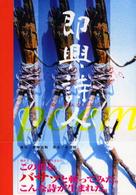Full Description
After World War II, the escalating tensions of the Cold War shaped the international system. Fearing the Worst explains how the Korean War fundamentally changed postwar competition between the United States and the Soviet Union into a militarized confrontation that would last decades.
Samuel F. Wells Jr. examines how military and political events interacted to escalate the conflict. Decisions made by the Truman administration in the first six months of the Korean War drove both superpowers to intensify their defense buildup. American leaders feared the worst-case scenario—that Stalin was prepared to start World War III—and raced to build up strategic arms, resulting in a struggle they did not seek out or intend. Their decisions stemmed from incomplete interpretations of Soviet and Chinese goals, especially the belief that China was a Kremlin puppet. Yet Stalin, Mao, and Kim Il-sung all had their own agendas, about which the United States lacked reliable intelligence. Drawing on newly available documents and memoirs—including previously restricted archives in Russia, China, and North Korea—Wells analyzes the key decision points that changed the course of the war. He also provides vivid profiles of the central actors as well as important but lesser known figures. Bringing together studies of military policy and diplomacy with the roles of technology, intelligence, and domestic politics in each of the principal nations, Fearing the Worst offers a new account of the Korean War and its lasting legacy.
Contents
Acknowledgments
Introduction
Part I. The War
1. Stalin Endorses War in Asia
2. Kim Il-sung Plans an Attack
3. Truman Consolidates US Commitments
4. Joseph McCarthy Sells the Politics of Fear
5. Paul Nitze Sounds the Tocsin
6. North Korea Drives South
7. Truman Reverses Policy
8. Douglas MacArthur Gambles and Wins
9. Mao Zedong Intervenes Massively
10. Peng Dehuai and Matthew Ridgway Fight to a Stalemate
Part II. The Transformation
11. George C. Marshall and Robert Lovett Guide a US Buildup
12. Dean Acheson Leads the Defense of Europe
13. Andrei Tupolev Creates a Strategic Bomber Force
14. Curtis LeMay Builds the Strategic Air Command
15. Igor Kurchatov Develops Soviet Nuclear Weapons
16. Walter Bedell Smith Reforms and Expands the CIA
17. Korea Transforms the Cold War
Chronology
Notes
Selected Bibliography
Index






